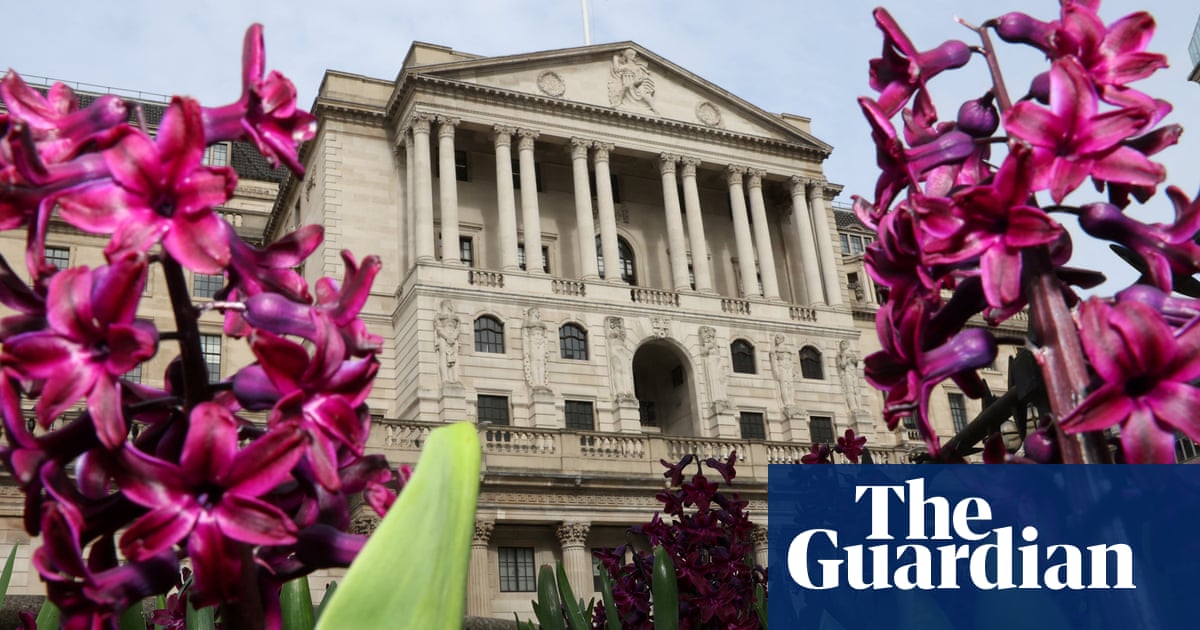The high proportion of UK homeowners on fixed-rate mortgages means the Bank of England should be wary of keeping interest rates too high for too long, the International Monetary Fund has warned.
The IMF said many borrowers had been sheltered until now from the impact of higher interest rates and there was a risk of declining consumption, house price falls and increasing defaults as tighter policy finally had an impact.
Although the chapter from the Washington-based body’s forthcoming world economic outlook does not single out any individual central bank, the study shows that the UK has one of the highest proportion of fixed-rate mortgages, after a sharp increase in their popularity in the decade leading up to the start of the Covid-19 pandemic.
Threadneedle Street’s monetary policy committee raised interest rates 14 times between December 2021 and August 2023 but has since left borrowing costs unchanged at 5.25% despite a fall in the annual inflation rate from 6.7% to 3.4% since last summer.
The IMF said the impact of higher interest rates tended to be weaker in countries where there was a high proportion of fixed-rate mortgages. In the UK, more than 80% of home loans are for fixed terms, usually for periods of five years or less. More than 1.5m fixed-rate mortgages will come to an end during 2024.
“Most central banks have made significant progress toward their inflation target. It could follow from the discussion that, if transmission is weak, erring on the side of too much tightening is always less costly. However, overtightening, or leaving rates higher for longer, could nevertheless be a greater risk now,” the IMF said.
“While fixed-rate mortgages have indeed become more common in many countries, fixation periods are often short. Over time, and as rates on these mortgages reset, monetary policy transmission could suddenly become more effective and so depress consumption, especially where households are heavily indebted.
“The longer time rates are kept high, the greater the likelihood that households will feel the pinch, even where they have so far been relatively sheltered.”
The IMF said many households across the world had taken advantage of low interest rates to secure low-cost mortgages before and during the lockdowns that accompanied the pandemic. By the time central banks began to tighten policy, effective mortgage rates had reached their lowest point in decades in many countries. The combination of low rates and structural changes led to rapid growth in house prices globally, adding to already elevated property markets in some countries.
“Over time, and as rates on these mortgages reset, monetary policy transmission could suddenly turn more effective and thereby depress consumption,” the IMF said. “Although central banks already incorporate this possibility in their decisions, the effects on consumption could still be larger than expected.
“Financial instability could also follow if defaults rise abruptly. This is especially true in countries where households are highly indebted or where bankruptcy laws favour borrowers.”
after newsletter promotion
The IMF said the sharp rise in house prices during the pandemic had also rendered some markets overvalued and these were more likely to correct if interest rates remained high for a long period.
Separately, the IMF urged regulators to keep a close watch on the private credit market – lending to companies by nonbank financial institutions such as investment and pension funds – which has grown rapidly and stood at $2.1tn (£1.7tn) last year.
The IMF said in a chapter from its forthcoming global financial stability report that the migration of lending from regulated banks to the “more opaque” world of private credit was potentially risky.
“Valuation is infrequent, credit quality isn’t always clear or easy to assess, and it’s hard to understand how systemic risks may be building given the less than clear interconnections between private credit funds, private equity firms, commercial banks, and investors.”
While private credit posed little immediate threat to financial stability, the IMF said if there was a continuation of fast growth with limited oversight, then existing vulnerabilities could become a systemic risk.







